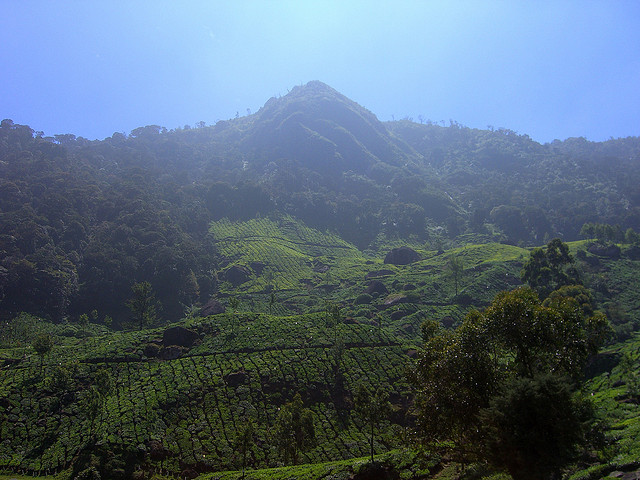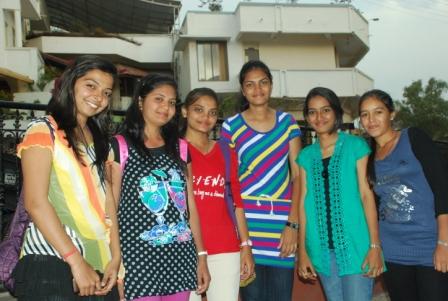Search Results for Tag: India
India poll workers brave wild animals to reach voters
Braving hungry crocodiles, Asiatic lions, wild elephants and traveling in camel caravans– sound like an Indiana Jones movie? It’s what some election officials in India have faced in recent days trying to do their job.
 This Asiatic lion, along with other wildlife, awaited an election team in the Gir forest in Gujarat (Photo credit: CC BY 2.0: Shaunak Modi)
This Asiatic lion, along with other wildlife, awaited an election team in the Gir forest in Gujarat (Photo credit: CC BY 2.0: Shaunak Modi)
Pulling off a parliamentary election in the world’s largest democracy is never an easy task. Apart from the mind-boggling logistics this time (814 million eligible voters; over 930,000 polling stations; nearly 6 million poll workers), India’s physical size and topographical diversity trigger an obstacle course for some poll workers. From snow-bound mountains in the northern Himalayas, the deserts of western Rajasthan, tropical jungles to tiny remote islands in the south, some poll officials have to navigate a variety of routes to ensure citizens can cast their votes. And, a few election officials have also had to brave the teeming wildlife that comes with the terrain.
One newspaper report, along with a video, detailed how election officials on the Andaman and Nicobar archipelago in the Indian Ocean – home to more than 550 islands, many of them heavily forested – recently got into canoes and undertook a three-hour journey on a river infested with crocodiles. Their job was to get to a remote village along with their two voting machines and set up a polling booth. The mission, though harrowing, was eventually successful. But election officer, Biswajit Roy, a veteran of national polls, told the Wall Street Journal: “In all my years, this by far was the toughest.”
There were also reports of officials trudging through tropical jungles inhabited by snakes and traveling in camel caravans to reach settlements in the Thar desert in northwestern Rajasthan. Big animals were also very much on the mind of a polling team that traveled to the Gir forest in the western state of Gujarat – home to the majestic Asiatic lion – to cater to a lone voter in a hamlet there. Election rules in India say there must be a polling station within two kilometers of every residential community.
And, earlier this month, election officials in the northeastern state of Meghalaya had to contend with a herd of wild elephants that blocked the way to two polling stations. They were eventually chased away into the jungle by forest rangers.
What ranks higher: Biodiversity or need for green energy?

The Western ghats in India are home to 39 Unesco World Heritage Sites (Photo credit: CC BY NC SA: pocketdora)
If you were a politician and forced to choose, in which way would you push your agenda: preserve nature’s diversity by upholding protected areas or to lift the restrictions to allow them to be used for green energy projects – such as solar power or wind farms?
Such decisions are made all over the world. In Sweden for example, there is great potential to expand the use of hydro- or wind-power. At the same time large parts of the country are nature reservoirs and thus protected. But people in Sweden people love there nature and they seem to generally agree that protected areas shouldn’t be given up for the sake of more green energy.
In India the opposite happens: In a region called the “Western ghats“, reaching along almost the whole Western coast of the country. Due to its richness in unique plant- and animal-species it’s also considered a global biodiversity hotspot – one of 35 biodiversity hotspots worldwide. Though, a little over a third (some 60,000 sq km) of that area is designated an “ecologically sensitive area” and thus protected. Well, “protection” here means the following: Companies are not allowed to dig mines, set up thermal power plants or any other polluting industries. But hydro-electric power plants and wind turbines are ok if they conform to strict “green” rules and monitoring, according to a report by the Times of India.
The other 63 percent of the Western Ghats will remain unprotected, designated as “cultural landscape” (including villages, agriculture and non-forest plantations). But biodiversity experts call for caution: just because a region is considered a “cultural” landscape it should not be less worth protecting. Also, in a cultural landscape they consider industrial activity to be a possible threat to nature’s richness. Environmentalists fear desertification of the region may be a problem, too.
As so often it comes down to a hard choice between economic goals and the value of nature: How would you decide?
Violence against women – figuring out the problem in India

These girls are all studying engineering, a field once dominated by men
What explains violence against women in India? While filming in Rajasthan in northern India, Global Ideas reporter Birgit Maaß tried to find out what ordinary men and women think about the issue – and came across some interesting perspectives and plenty of optimism.
The first time I open a newspaper in Delhi, the Hindustan Times, I notice how just how many reports focus on rape. I had already read a lot about the issue at home after mass protests broke out following the gang rape and death of a student in Delhi in December. I ask myself what the underlying reasons are and what it says about the role of women in society. It’s an issue that I think about a lot.
The first person who has little chance of evading my questions is my cameraman, Manish. He says he has no explanation for it. These men are sick in the head, he says. Women are actually revered in India, Manish adds, saying earlier the gods were all women.
From Delhi, Manish and I take the overnight train to Rajasthan. Rajesh, a friendly trader in dried onions (he says “Germans are our best customers”) is a fellow traveler in our compartment. On a 14-hour-long train journey in a four-person compartment, we naturally strike up a conversation. The next day I risk raising the sensitive issue. He’s at a loss too. “My wife is the boss at home,” he says.
Rajesh lives with his wife, young son as well as his parents. He travels a lot for work, his wife is a homemaker. That’s the best model, the men in the compartment agree, saying the women are happy with it too. “Indian wives are the best,” they say. I’m stunned by their very traditional image of a woman.
On arriving in Rajasthan, we’re received by the Brahma Kumaris, a spiritual community. We’ve come to report on their huge solar project. I’m told that I shouldn’t leave the complex in Mount Abu, a Hindu pilgrimage site, on my own as a woman as for fear of attacks. In Mount Abu, I notice a sign with a helpline number for women who are harassed. A policeman in the village tells me that such signs have put up all across the country since the attack in Delhi.

A poster in Hindi urging women to turn to the police if they are harassed
In the popular coffee shop, Café Coffee Day (its slogan is ‘Good Things Happen Over Coffee), I enter into a conversation with a family. Only the husband speaks to me and his answers turn terse when I broach the topic of women. All he says is that the perpetrators of the Delhi attack should be tried in a court, that’s all. A problem with the role of women in society? No not at all, he says.
To get a sense of what Indian women themselves think about the issue, I stop a group of young girls on the street headed towards me. They’re dressed in modern clothes and stand apart from the women in traditional saris who dominate the streets. They can hardly stop talking – the men think that women who are out in the evenings only want sex, the say. That goes for both older and younger men, the add. The women tell me they would never step out alone after 8 p.m. And even during the day, they consider it safer to be in a group. After all, they add, there’s an old saying, “a lone lady is like an open treasure.”
The girls I speak to are around 18 years old and are engineering students out on an excursion. They tell me that girls today are more successful than boys at school as well as at university. There’s a major social change underway, they say. Earlier, girls would have never entered traditionally male-dominated professions. Indian men, they say, have a hard time getting to used to this development. They told me that during their excursion, the teachers insist that they be back in their hotel by 8 p.m. while the male students are allowed to stay out until 11. “How unfair,” I say spontaneously and they all immediately agree. The budding engineers all want to work later and have equal rights. But they know it will be difficult to do that and some of them joke that it would be best if they learned karate.
Indian society is increasingly fragmenting, pitting emancipation against tradition. But does that explain the violence against women? I can’t exactly judge that. It’s probably just a small part of the problem. But I’ve learned a lot in our short conversation and I’m especially struck by the girls’ optimism.
They want to change society, they all agree. I wish them luck, we take a few photographs and then they quickly say goodbye since it’s getting dark.
“The Man Who Planted Trees”

It all started way back in 1979, according to the Times of India . That year, a huge flood washed a lot of snakes ashore on a sandbar. 16-year-old Payeng went there, the day the waters had receded. He found the snakes dead, and that experience changed his live. “The snakes died in the heat, without any tree cover,” he said to the newspaper. When he tried to ask the forest department to plant trees there, he made little headway. Nothing would grow there, the department answered. He should try growing bamboo on the sandbank instead, they told him. So that’s what he did.
Forestry officials in the region first learned of this new forest in 2008. Since then, they’ve come to recognize Payeng’s efforts as truly remarkable. “We’re amazed at Payeng,” says Assistant Conservator of Forests, Gunin Saikia. “Had he been in any other country, he would have been made a hero.”
Diwali goes green

Diwali is one of the biggest celebrations to take place in India each year. Known as the ”festival of lights,” Diwali usually takes place some time between mid-October and mid-November. During the celebration, families light candles, share gifts and meals, and of course, light fireworks.
Because it’s such a big festival, it’s not unusual to see hazy, smoke-filled air in many towns and cities during Diwali because of all the fire crackers. Unfortunately that’s not so good for the environment. But this year, Diwali is going green with eco-friendly fireworks. They’re made of recycled paper and stuffed with leaves so they emit a lot less smoke and noise. And they’re apparently very popular, too – stores say the special firecrackers are flying off the shelves.
The online portal oneindia.in offers five easy steps on how to prevent pollution during Diwali. It’s not that hard…








Feedback